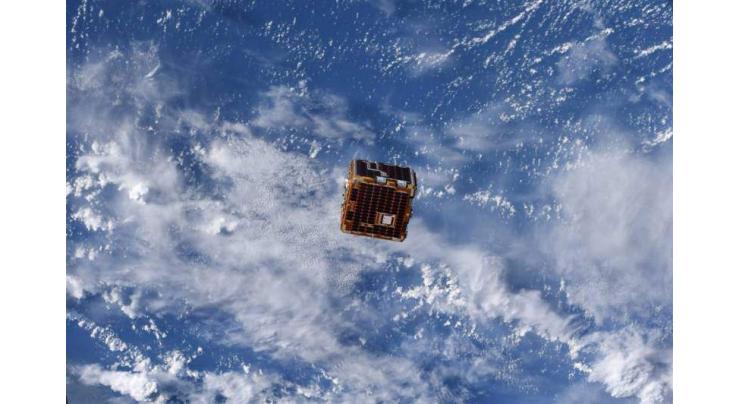
Scientists Find Way To Track Space Junk In Daylight
Umer Jamshaid Published August 04, 2020 | 11:51 PM

Scientists said Tuesday they had discovered a way to detect space debris even in daylight hours, potentially helping satellites to avoid the ever-growing cloud of junk orbiting the planet
Paris, (UrduPoint / Pakistan Point News - 4th Aug, 2020 ) :Scientists said Tuesday they had discovered a way to detect space debris even in daylight hours, potentially helping satellites to avoid the ever-growing cloud of junk orbiting the planet.
Defunct rockets, satellites and spacecraft parts continue to orbit Earth after they are discarded.
The estimated 500,000 objects circling the globe range in size from a single screw to an entire rocket fuel tank.
Travelling at thousands of miles an hour, they pose a huge and rising collision risk to satellites.
Using lasers, it is possible to detect the debris from the ground. But until now this method only worked for a few hours around twilight, when the detection station on Earth is in the dark and the debris still illuminated by the Sun.
A team of researchers based in Austria now think they've extended the window in which the space junk is visible using a combination of a telescopic detector and filter to increase the contrast of objects as they appear against the sky during the day.
The team also developed a real-time target detection software system that predicts when certain objects could be observable and used sightings to hone its accuracy.
Overall, the new technique could increase observation times of space junk from Earth from six to 22 hours a day.
Michael Steindorfer, from the Austrian academy of Sciences Space Research Institute, said the technique, while experimental, should drastically reduce the fraction of sky teams need to search with lasers in order to locate the debris.
"We see our results as a starting point towards increasing the output of the space debris laser ranging community in the near future," said Steindorfer, lead author of the study published Tuesday in Nature Communications.
He told AFP the technique "could significantly contribute to improving orbital predictions in case of (collision) warnings or for future space debris removal missions."
Related Topics
Recent Stories

Today Gold Rate in Pakistan 10 May 2024

London, Frankfurt stocks hit record highs on rate-cut hopes

May 9 culprits must be brought to logical end: Hanif Abbasi

Sanchez escapes through dust and gravel for nervy Giro triumph

Balochistan Assembly passes resolution to condemn May 9 attacks

Spain govt vows to block hostile BBVA bid for rival bank

NADRA holds open court to resolve public issues in Quetta

In south Brazil, race on to deliver aid ahead of new storms

Appeals against cipher case verdict adjourned till May 15

PIPS collaborates with CfP to enhance technological, educational infrastructure

China launches new satellite

Incidents of misbehavior with patrolling officers are unacceptable: IG NH&MP
More Stories From Science
-

China's Mars rover finds water evidence on the red planet: study
2 years ago -

China's top 10 advances in life sciences in 2021 unveiled
2 years ago -

Not quite $1: US chain Dollar Tree announces price hike
2 years ago -

Australian astronomers help solve galaxy "murder mystery"
3 years ago -

US-European Solar Orbiter Spacecraft Makes Venus Flyby - ESA
3 years ago -

Chinese scientists discover ultrahigh-energy cosmic accelerators in Milky Way
3 years ago
-

Universe becomes hotter over billions of years
4 years ago -

Researchers discover high-speed jet closest to black hole
4 years ago -
Scientists find gas on Venus linked to life on Earth
4 years ago -

Scientists find 'life harbouring' gas on Venus
4 years ago -
Solar Orbiter gives scientists unprecedented look at Sun
4 years ago -

Chinese researchers present evidence of mantle material on far side of Moon
5 years ago









